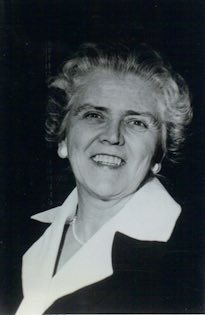In war and peace, Colonel Mary Hallaren proved herself a true leader of women. Described as “one of the giants among military women,” Hallaren enlisted in 1942 in the newly organized Women’s Auxiliary Army Corps (WAACS, later to become the Women’s Army Corps, WAACS). One year later, she commanded the first battalion of WAACS to serve in Europe, the largest contingent of women serving overseas throughout the Second World War.
By war’s end, Hallaren stood in the highest ranks of WAC leadership, serving as Director from 1947-1953. Many of her military colleagues favored the peacetime demobilization of women. Army Chief of Staff Dwight D. Eisenhower believed women were necessary to meet post-war personnel needs. Hallaren, refusing to “write ‘finis’ to women’s contribution,” became the primary exponent and dynamic force advocating permanent status for military women.
In 1948, despite strong opposition, Hallaren was instrumental in seeing that the Women’s Armed Services Integration Act was adopted, enabling women to serve as permanent regulator members of all of the armed forces, not just in the military in times of war.
In 1965, Hallaren assumed direction of new organizations, Women in Community Service, sponsored by a coalition of diverse women’s organizations. Through its program, at-risk women were able to secure job training and economic opportunity. Because of Hallaren’s vision and inspiration, women who might have failed economically and socially, succeeded.
Hallaren was also instrumental in the creation of the “Women in Military Service Memorial,” erected at the entrance of Arlington National Cemetery in the nation’s capital to honor the contributions and achievements of all military women.

